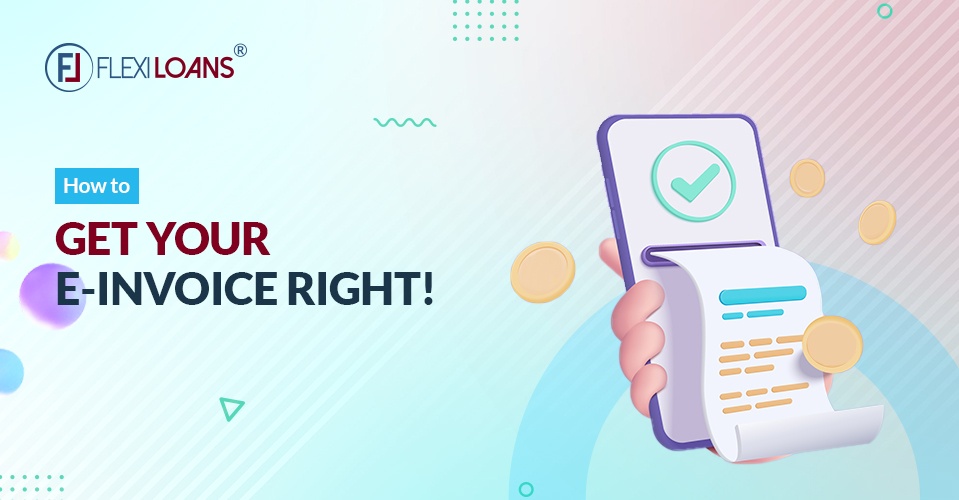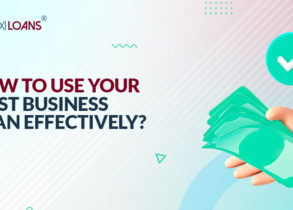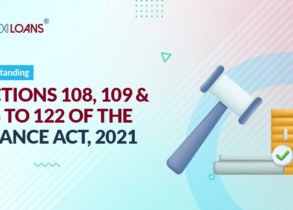Nov 16, 2022
Jun 26, 2025

Introduction
Under the E-Invoice system, you, as a taxpayer, must register your Goods and Services Tax (GST) bill on the Invoice Registered Portal (IRP). The IRP will give each invoice a distinctive Invoice Registration Number (IRN). The IRP will send the invoice’s details to the official website and e-way bill (EWB) platform in real time. So, it will make it easy for you to follow the rules. You can use the information on the invoice to file tax returns on the official website and make Part-A of both the e-way payment on the EWB website.
So, “E-Invoice” does not mean the bill is made on the official website. Instead, it means putting the bill on IRP and then using the information in the invoice to keep track of multiple compliances.
You can enter the payment information into the bulk generation tool on the e-invoice portal. This will create a JSON file that can be uploaded to the e-invoice system. Then, the data will be checked by the IRP. If the authentication goes well, the IRP gives each invoice a different IRN. Each invoice has an IRN, a digital signature, and a QR code. Under GST, this whole process is called “e-invoicing”.
From this portal, all payment information will be sent to the EWB and the GST portal. Also, there will be no need to manually file data when filing GST returns or preparing e-way bills.
Pros of E-Invoice
Here are the benefits of E-Invoice:
Ability to get money quickly
After contacting a lender, the billing borrowing facility could be set up in as little as two weeks. Once the billing financing facility arrangements have been made, you can instantly get the money. You can get the money within 24 hours of sending the customer an invoice. With this, your business will not run out of cash and will have a good cash flow cycle.
More money coming in
Most of the time, money is frozen because invoices haven’t been paid for a long time and are still due. This directly affects the health of your business’s cash flow cycle because it stops cash from coming in, making it harder for your business to run normally. With “E-Invoice”, you don’t have to face this issue and can have more money coming in.
Collateral-free
In most bank business loans, invoices are the only safety given in exchange for money. Since small businesses with few assets aren’t likely to be able to get traditional business loans, it would make payment funding a good option for them.
Changeable terms
Small to medium-sized businesses always prefer a business loan when it comes to getting money. You have more freedom with invoice financing because you can sell your invoices whenever you want. There is no obligation or force. There is also some level of openness about the expenses and processing costs.
Confidentiality
Invoice financing has a feature that keeps things private. Depending on the agreement, the customers may not even know that their bills have been sold. When it comes to invoice financing, the businesses that choose this have full control over the process. It also gives them more control over how they deal with their customers.
Real-time E-Invoice tracking
E-invoicing offers real-time tracking prepared by a supplier. This allows for faster availability of input tax credits.
Cons of E-Invoice
An E-Invoice has its cons too. These are given below:
Extra costs
Even though invoice financing costs have decreased in recent years, it is still not the cheapest way to get money. Companies that loan money to businesses may also receive payments and bill them differently.
It helps only with particular issues
Invoice financing is a short-term fix for a particular problem: not having enough money coming in. Aside from making sure cash flows regularly, it doesn’t solve any other issues. For example, it doesn’t solve the problem of customers who pay late or don’t pay at all.
Customers might know the deal
If your company decides on invoice discounts, it is still responsible for collecting the money. As a result, your clients will be unaware of the invoice loan agreement. However, for borrowed funds to work, you must deal with the clients. The issue can work in a particular way, harming your company’s client relationships.
Business-to-business (B2B) invoices are the only ones that can be financed
You can use the billing funds facility to pay for commercial invoices where the buyers are other businesses. If your company sells to the consumers at large (if it is B2C), you will not be able to get the same benefit.
Details must be filled out on an E-Invoice
An E-Invoice has information about the supplier and the recipient, as well as details about the transaction. In addition to both parties’ information, an E-Invoice has both required and optional fields. The portal makes sure that there are no empty spots.
Conclusion
E-invoicing is considered a significant tax reform under the GST since it will encourage interoperability, increase transparency, and eliminate human participation in the business invoicing process.
When the system was first established, payers thought that making E-Invoices in GST meant billing on the official website. On the other hand, e-invoicing suggests creating invoices with your financial or payment software and then uploading them to a central site called the “E-Invoice Registration Portal”. This is to make trade more even. This Billing Registration Portal will generate a specific IRN and a fast response code.







